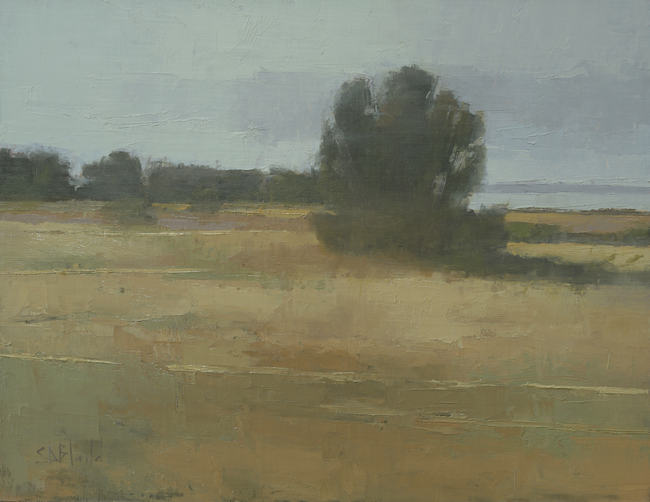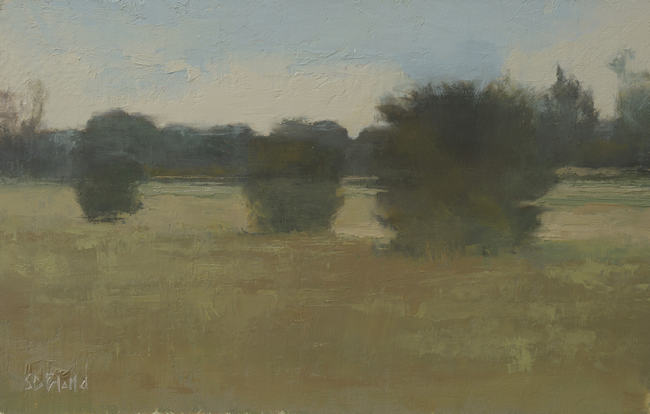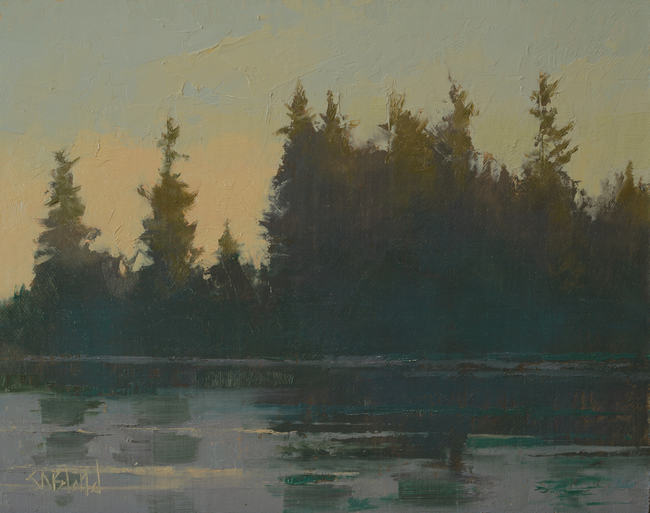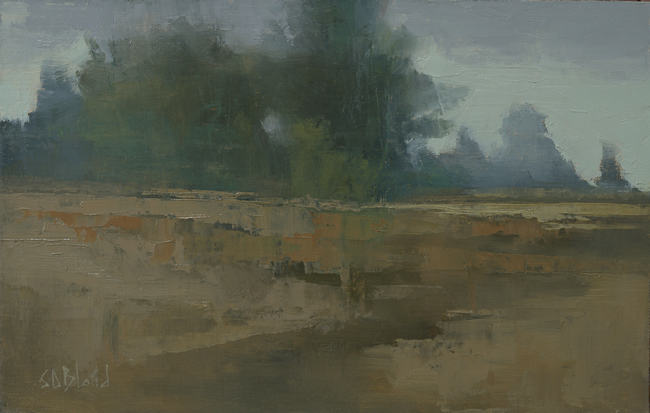My first lesson in oil painting technique came from reading 'Richard Schmid Paints the Landscape' in which he demonstrates how to start a painting with the application of a thin paint layer called a block-in. Since then, I have followed his methods exclusively and my paintings have been done in a style that closely resembles alla prima.
In this article I describe some of the ways in which I've extended this method to get me to the heart of the painting more quickly.
Until now, I've mostly done the block-in as a thin monochromatic wash, that is, with paint that's thinned with lots of solvent to the point where it's semi-transparent. A normal paint layer is then applied over the top.
I've now changed things around a bit. I still work over a preliminary underpainting (done with Gamblin Fast Matte) because dark areas are easier to handle when there's a dark color underneath them.
But I now apply a block-in on top of that basic underpainting. I allow this paint layer to be a little thicker than usual—instead of a wash, I apply it with diluted medium—and I use passages of both opaque and transparent paint. With this thicker paint I'm able to add color variation, soft edges, and atmospherics much earlier than I usually would.
A layer of thick paint (with undiluted medium) is subsequently added.

Center Field. 9x12, oil on linen panel. 2019.
I apply this thicker paint only in the places where I either need to refine forms, or add light, texture, and detail—in the painting above those places were the foreground, the ocean, and parts of the sky.

Hawthorns. 7x11, oil on hemp panel. 2019.
When all the paint is dry, I also add some glazes or scumbling to enhance the atmospheric effects, especially in the dark areas. These are very thin, translucent layers created with about 90% glazing medium and 10% paint.
What I find with atmospherics is that when I think I have enough, I'm usually only 50% of the way there.

Orchard Point. 8x10, oil on linen panel. 2019
In the Pacific Northwest atmospherics can also appear in the foreground. The benefits of adding some color variation to the dark shapes are obvious.

Broken Cloud. 7x11, oil on hemp panel. 2019.
Working this way, it is easier to keep the work loose. You can start with large abstract masses of lights and darks then add opaque paint to create the shapes you need.
For this painting I extended the dark block-in all the way through the foreground so that I could paint into it with the lights.

The Gap in the Trees. 6x12, oil on linen panel. 2019.
This method also helps to simplify some things that would otherwise be hard to do. Scenes like this one of light coming through trees are easier when you can just focus on the light.
However, this method isn't without its drawbacks:
For starters, you must plan so that you can arrive at the finished painting by way of an abstract block-in. You end up navigating the painting without much to guide you so that you must do most of the drawing with thick paint in the final stages of the work
And secondly, it's harder to make changes once you start to apply the final layers of thick paint. Scraping back also removes everything underneath—often you'll need to build up the area again from scratch.
Despite these things, this is a reliable alla prima method for landscapes that makes developing dynamic edges and atmospherics much easier. I'm looking forward to developing it further.